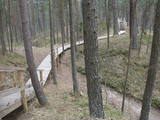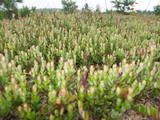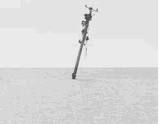| Nr | Nosaukums | Apraksts |
|---|---|---|
|
Divu satekupju Mūsas un Mēmeles krastos top Latvijā iecienīts alus - Bauskas alus, kas ražots pēc klasiskās alus rūgšanas tehnoloģijas. Iespēja apmeklēt Bauskas alus darītavu un tuvāk iepazīties ar alus darītavas vēsturi, ieskatīties Bauskas alus un bezalkoholisko dzērienu tapšanas procesā, kā arī tiek piedāvāta iespēja nogaršot Bauskas alus ražotos dzērienus. |
||
|
Pēc izmēriem - salīdzinoši nelielais dabas parks, kas atrodas Jūrmalas pilsētā, veidots piekrastes kāpu, veco priežu audžu un piekrastes biotopu aizsardzībai. Parka teritorijā atrodas viena no atraktīvākajām pierīgas dabas izziņas takām, kas veidota interesanta kāpu veidojuma – līdz 17 m augstās Ragakāpas apkārtnē. Tā ir lieliska iespēja ikvienam iepazīt kāpu biotopus un to apdzīvotājus – augus, putnus, kukaiņus u.c., t.sk. simtgadīgas priedes, nebraucot tālu no valsts galvaspilsētas. |
||
|
Taisa darbus (praktiskas un saimniecībā noderīgas lietas) latviešu etnogrāfiskā stilā un turpina vecās latviešu kalējmākslas tradīcijas. Apmeklētāji var izkalt naglu vai pakaviņu. |
||
|
Maršruts "Murjāņi - Līgatne" ved caur Gaujas senieleju ar devona smilšakmens atsegumiem, raksturīgo augu valsti un dzīvniekiem. Krastos sastopami Latvijā lielākie nogāžu un gravu meži ar liepām, ozoliem, gobām un ošiem. Upes līkumos palienē aug baltalkšņu un vīksnu audzes. Uz koku stumbriem atrodams plaušķērpis. Senieleja bagāta ar sausokņiem un kritalām, tāpēc Gaujas krastu mežos dzīvo visu Latvijā sastopamo dzeņu dzimtas sugu putni. Smilšainajās Gaujmalas pļavās un Gaujas vecupēs ir bagātīga bezmugurkaulnieku fauna. Upes krastos ir smilšakmens klintis ar čurkstu alām un zivju dzenīša ligzdām. Klinšu pakājē iztek avoti, kas uztur mikroklimatu ielejā. Gauja ir nozīmīga arī kā Latvijas lielākā lašupe. Maršruts ir daļēji marķēts un papildināts ar norādēm un informācijas stendiem. |
||
|
"Pūres beķereja" atrodas pilsētas galvenās gājēju ielas malā. Cep speķa pīrādziņus, biezpienmaizītes, kanēļmaizītes, kliņģerus un tortes. Piedāvā vintage stila velosipēdu nomu. |
||
|
Biotopu un ainavu ziņā daudzveidīga teritorija, kas veidota ligzdojošo un caurceļojošo putnu aizsardzībai. Izstrādātajā purva daļa izveidota lielogu dzērveņu audzētava – viena no pirmajām mākslīgajām dzērveņu audzētavām Latvijā.
|
||
|
Zemnieku saimniecība "Krūmiņi" , tautā saukta par Maizes māju ir vieta, kur līdzdarboties īstas lauku maizes cepšanas rituālos, pašiem gatavot mīklu un cept pīrāgus, iepazīt graudus, izpētīt graudu produktus, izveidot latviešu spēka zīmes un izzināt ar maizi saistītās, gadsimtiem senās tradīcijas. Lauku sētas sirsnīgie saimnieki senā klētiņā piedāvā izbaudīt arī gadskārtu godus, neparasti nosvinēt savas īpašās svētku dienas un izbaudīt paplašinātas dzīves prasmju programmas ar ugunskurā vārītu zupu un dabas norišu vērošanu. Ciemojoties Maizes mājā, uzzināsiet, kādēļ šeit gandrīz 100 gadus cep maizi ar brīvības garšu, par to vislabāk zina stāstīt lustīgie mājas saimnieki. |
||
|
Vēsturiskais ceļš (V1279), kas pirms jaunā ceļa būvniecības caur Ēdoli savienoja Kuldīgu ar Alsungu. Mūsdienās ainaviskais ceļš (grants segums) līkumo cauri mežiem un lauksaimniecības zemēm. Piemērotā laikā to var izmantot kā alternatīvu ceļu, lai iepazītu Suitu novada ainavas. Ceļojumu pa Veco suitu ceļu var veikt ar divriteni. |
||
|
This tour features the best trails and attractions within the Gauja National Park. The walks are organised so that travellers are constantly on the move. The main “artery” of the park is the ancient Gauja River valley with many tributaries and deep ravines with massive sandstone cliffs from the Devonian period. The walk starts from one of the oldest churches in Latvia and follows the river which finishes at Sigulda bobsled track. Scenic views of the river, cliffs and nature trails await in the next section. The Amata river trail winds through untouched forest and inlcudes an icon of the Latvian landscape - Zvartes rock. At Cēsis explore the little streets, climb the tower of St John's Church and visit medieval castle ruins before heading to Cirulisi nature trail to explore the area's geological history. Ungurmuiza Manor is the only remaining wooden baroque manor house in the Baltics. A short trail weaves through ancient oak trees. The park also features several sites of cultural importance: Turaida Museum Reserve, Krimulda Manor and Ligatne historic centre. |
||
|
Pilsētas rajons dienvidos no Ventas grīvas, kura mūsdienās redzamā mazstāvu koka apbūve sāka veidoties 19. gs. vidū. Ostgala pirmsākumi meklējami 1836. g., kad Krievijas valdība, solot priekšrocības, aicināja apkārtnes zvejniekus apdzīvot smilšaino un kustīgo kāpu pārņemto piekrastes daļu. Ostgals ir atzīts par valsts nozīmes pilsētbūvniecības pieminekli. |
||
|
Dodieties ekskursijā, lai gūtu ieskatu lauku profesijā un dzīvesveidā, kā arī iegūtu jaunus iespaidus un labu atpūtu visai klasei. Ekskursijas laikā apmeklējiet ekopoligonu, kas ir unikāls piemērs ekoloģiski saderīgu darbības virzienu ieviešanai. Pēc tam apmeklējiet saimniecību, kurā iespējams aplūkot Latvijas tumšgalves aitas, uzzināt par to audzēšanas specifiku, dzīves paradumiem un aitkopības nozari Latvijā, kā arī iespējams aplūkot dažādus putnus - tītarus, zosis, pīles, vistas un pērļu vistas. Saimniecībā atrodas arī observatorija, kur var noklausīties lekciju par zvaigznēm, planētām un citām tēmām. Ekskursijas noslēgumā dodieties uz kokapstrādes darbnīcu, lai meistaru vadībā darbotos ar tradicionālajiem kokapstrādes instrumentiem un apgūtu senās spēles. |
||
|
Saukts arī par Jēša vai Ieša ezeru. Salām bagātākais Latvijas ezers ar aptuveni 35 salām. Visvairāk salu ir ezera ziemeļaustrumu daļā, bet lielākā sala ir Lielā Lāču sala (45 ha), uz kuras pat savulaik atradusies viensēta. |
||
|
Neskartu mežu cienītāji var doties izpētīt Plakanciema puses mežu takas. Braucot no Plakanciema pasta nodaļas Mellupu virzienā pa autoceļu V7, pēc aptuveni 1 km jānogriežas ceļā pa labi. Tālāk jādodas uz priekšu vēl 1,2 km. Maršruta sākums - iepretī mājām “Putriņas” ceļa kreisajā pusē, kur sākas meža ceļš. Sākumā maršruts ved pa taisnu meža ceļu. Pēc 500 m nonākam pie ūdenskrātuves (karjera). Šeit ir iespēja doties vai nu gar vienu ūdenskrātuves krastu, vai gar otru. Abās pusēs var aiziet aptuveni līdz ūdenskrātuves pusei un tad griezties atpakaļ. Krastā augošos kokus iecienījuši bebri. Ūdenī peldas pīles, meža ceļa malā vairāki skudrupūžņi, no sakritušo pērno lapu apakšas lien ārā zaķskābenes. |
||
|
Atrodas Jaunpiebalgas centrā. Tās celtniecības būvdarbus laikā no 1801. - 1804. g. vadīja Cēsu būvmeistars Fridrihs Veits. Dievnama altāra centrā atrodas glezna “Kristus pie krusta” (19. gs. otrā puse). Zvans liets 1895. g., bet ērģeles tapušas 1914. g. Baznīcas ieejas priekšā paceļas 1930. g. atklātais piemineklis 1. pasaules karā un Latvijas Brīvības cīņās kritušajiem (tēlnieks K. Zāle, arhitekts A. Birzenieks). Pavisam nesen ir pabeigti baznīcas fasādes restaurācijas darbi, un šobrīd notiek dievnama interjera restaurācija, tādēļ tas apskatāms tikai no ārpuses. |
||
|
From Riga the tour goes to Sigulda where you can see the Olympic Bobsled truck, visit Sigulda medieval castle and take a cable car across to Turaida medieval Castle with beautiful views across the Gaujas Valley. Kids would love activities at the adventure centre Tarzans. At Ligatne walk Nature trails to see the local wild animals at their enclosed territories and wonder around the historic village originally formed around the Paper Mill. Further on visit impressive medieval castle ruins at Cesis town and the picturesque Devonian Zvarte outcrop at Karli. Then the route goes along the coast with sandy beaches great for walking, playing and swimming. There visit museum of the biggest liar in the world - Munhauzen and listen to his fantastic adventure stories. Then the route goes to the Western part of Latvia and focuses on the sea and coastal life. From Riga visit the sea resort Jurmala, stop at Pure Chocolate Museum and then continues to Cape Kolka where open sea meets Riga Bay. There explore trails at Sliteres National Park, visit villages of Livs which is one of the smallest ethnic nations in the world, enjoy freshly smoked fish. At Ventspils enjoy endless facilities for children - kids town, narrow gauge train, aqua parks, well equipped beach and adventure park. On the way to Riga visit charming Kuldiga with well preserved wooden architecture and stop at the farm where kids could enjoy different farm animals |
||
|
Labiekārtota (informācijas stendi, atpūtas vietas) un marķēta taka, kas ved apkārt Kokšu ezeru virknei, kurā ietilpst Zāļu, Dziļais un Dibena ezers. Iepazīstami mežu biotopi, dzīvnieki un to darbības pēdas. Iespējami trīs dažādi takas izziešanas varianti: 7 km, 4,5 km, 2,7 km. Maršrutu var braukt ar divriteni. Ietilpst Ziemeļvidzemes biosfēras rezervātā. |
||
|
Zemnieku saimniecības "Imantas" galvenais darbības virziens ir olu ražošana. Te iespējams apskatīt lauku saimniecībā dzīvojošos dzīvniekus un dažādu šķirņu vistas, uzzinot kaut ko jaunu vai sen piemirstu par vistām un olām. Piedāvā arī iegādāties lauku olas. |
||
|
Nepilnus 100 km garš un līdz 36 km plats saldūdens līcis, kas ziemeļos (starp Klaipēdas ostu un Kopgali) ir savienots ar Baltijas jūru. No Baltijas jūras to atdala iespaidīgā Kuršu kāpu strēle. Kuršu jomā ietek lielākā Lietuvas upe – Nemuna. Kuršu jomas krasti ir g.k. apauguši ar niedrēm, daudzviet purvaini un pat grūti pieejami. Jau kopš seniem laikiem Kuršu joma ir bijusi ļoti nozīmīga vietējo cilvēku ikdienas nodarbes – zivju zvejas vieta. Kuršu joma un tās skaistās ainavas ir daudzviet vērojamas gan no Kuršu kāpu ciemiem, gan arī augstāko kāpu virsotnēm. Kuršu jomu ar prāmi šķērso ikviens, kas no Lietuvas (Krievijas pusē Kuršu strēle ir savienota ar Kaļiņingradas (kādreiz – Sembijas) pussalu) dodas uz Kuršu kāpām. |
||
|
Atrodas Kopgaļa cietoksnī. Tā akvārijā apskatāmas Baltijas jūras u.c. pasaules jūru un okeānu zivis un dzīvnieki, tiem veltīta ekspozīcija, pingvīni un roņi. Cietokšņa pulvera pagrabos ir izvietota Lietuvas kuģniecības ekspozīcija, bet uz bastioniem – seno ieroču kolekcija. Baltijas valstīs vienīgais delfinārijs. |
||
|
Papes aviācijas poligonā, kas atradās jūrā, netālu no krasta - notikusi šaušanas apmācība un aviācijas bumbu mešana uz mērķiem. Jūrā saglabājušies bijušie nogremdētie kuģu vraki un mērķi. Virs ūdens saglabājies vien kuģa masts. Pēc Andra Maisiņa sniegtās informācijas, arī Papes ezera ziemeļdaļā ir bijis aviācijas mērķis - no riiepām veidots lidmašīnas siluets.
|
||



























